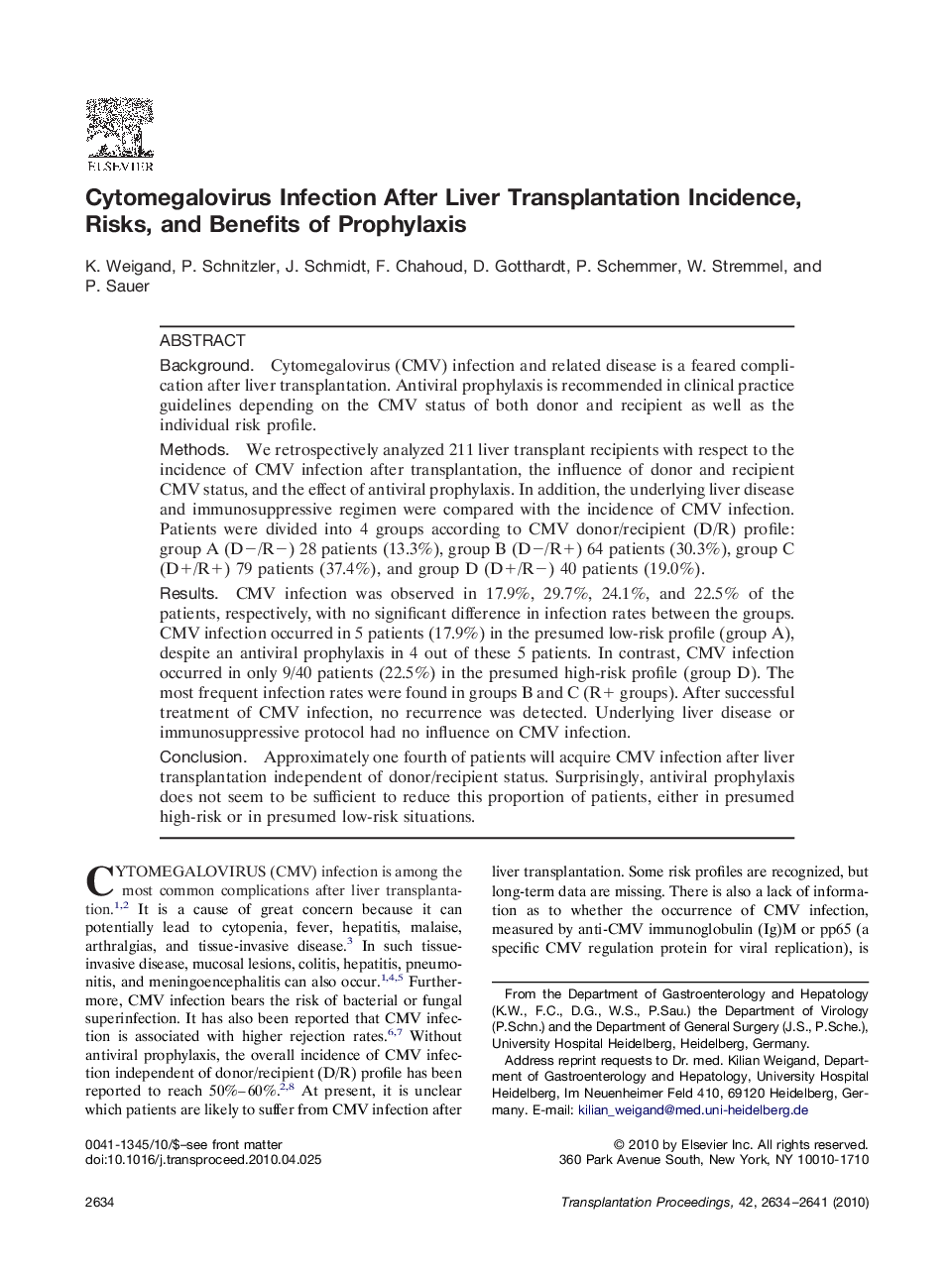| Article ID | Journal | Published Year | Pages | File Type |
|---|---|---|---|---|
| 4259452 | Transplantation Proceedings | 2010 | 8 Pages |
BackgroundCytomegalovirus (CMV) infection and related disease is a feared complication after liver transplantation. Antiviral prophylaxis is recommended in clinical practice guidelines depending on the CMV status of both donor and recipient as well as the individual risk profile.MethodsWe retrospectively analyzed 211 liver transplant recipients with respect to the incidence of CMV infection after transplantation, the influence of donor and recipient CMV status, and the effect of antiviral prophylaxis. In addition, the underlying liver disease and immunosuppressive regimen were compared with the incidence of CMV infection. Patients were divided into 4 groups according to CMV donor/recipient (D/R) profile: group A (D−/R−) 28 patients (13.3%), group B (D−/R+) 64 patients (30.3%), group C (D+/R+) 79 patients (37.4%), and group D (D+/R−) 40 patients (19.0%).ResultsCMV infection was observed in 17.9%, 29.7%, 24.1%, and 22.5% of the patients, respectively, with no significant difference in infection rates between the groups. CMV infection occurred in 5 patients (17.9%) in the presumed low-risk profile (group A), despite an antiviral prophylaxis in 4 out of these 5 patients. In contrast, CMV infection occurred in only 9/40 patients (22.5%) in the presumed high-risk profile (group D). The most frequent infection rates were found in groups B and C (R+ groups). After successful treatment of CMV infection, no recurrence was detected. Underlying liver disease or immunosuppressive protocol had no influence on CMV infection.ConclusionApproximately one fourth of patients will acquire CMV infection after liver transplantation independent of donor/recipient status. Surprisingly, antiviral prophylaxis does not seem to be sufficient to reduce this proportion of patients, either in presumed high-risk or in presumed low-risk situations.
